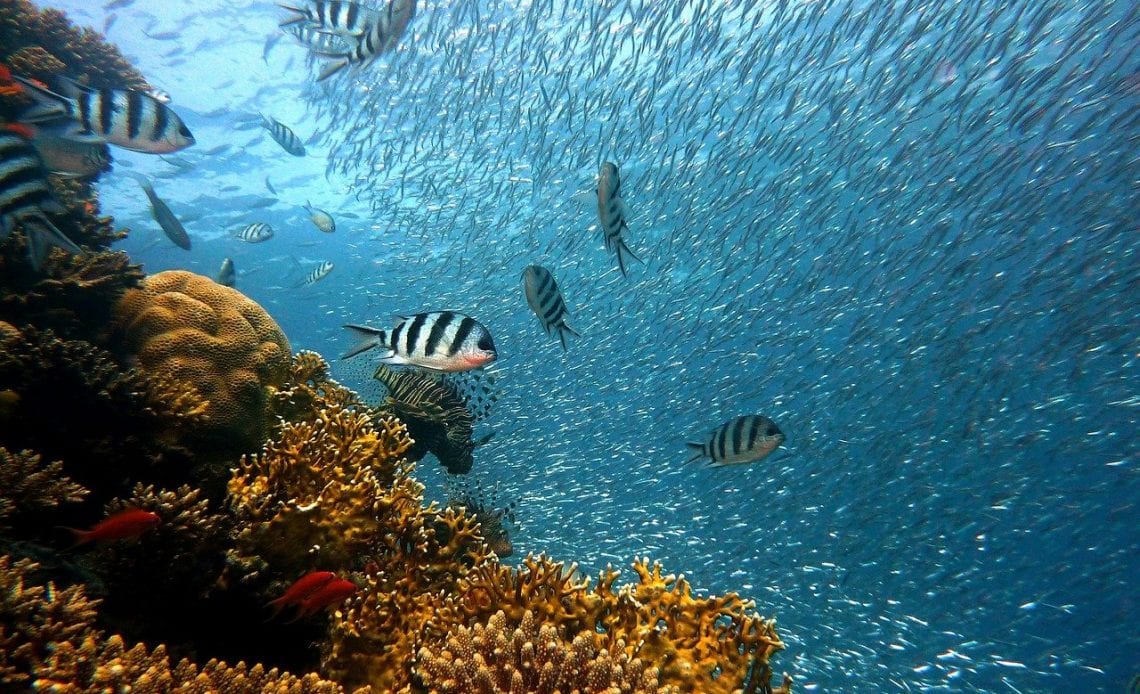
When anyone mentions any water body and talks about aquatic animals, we usually think of fishes.
Our mind’s eye brings up images of all kinds of colorful fishes. We may also think of big ones like whales and sharks, and maybe some interesting ones like the jellyfish.
However, the sea is filled with strange and unique animals that we know nothing about. Since water covers 71% of the earth’s surface, most of the life on earth is primarily aquatic. So it goes without saying that the seas hold more interesting and diverse life forms than we see on land.
The world inside the seas is brilliant, colorful, and dangerous. The scale of adaptation of sea creatures to changing environments is amazing. Scientists are just about discovering the vast majority of these beautiful and sometimes lethal sea creatures. From the delicately crafted jellyfish to the dangerous giant squid, the variety of animals in our seas and oceans is mind-boggling.
Here is a list of 6 weird animals that live in the sea.
Frogfish

Family: Member of the anglerfish family Antennariidae
Frogfishes are pretty common and are mostly found in tropical and subtropical seas all over the world. They have a large mouth and prickly skins.
These amazing creatures are masters of disguise. You could be staring at a frogfish, but you can never tell. They blend in so well into their surroundings which are usually coral reefs. The frogfish come in all sorts of shapes, textures, and colors. They assume resemblance to sponges and rocks on the sea bed. You would have to be an expert to spot a frogfish on the ocean floor. With their drab colors and rough texture, it is easy for frogfish to look like a nearby rock.
Another interesting trait that frogfish exhibit is their ability to lure their prey. Frogfishes can modify their fin (called illicium) to look like a worm or a tiny fish. Other fish that pass by can mistake this to be their food. When they come close to eat what they believe is their dinner, they end up becoming dinner for the clever frogfish.
Frilled Shark

Scientific name: Chlamydoselachus anguineus
Frilled sharks are one of the weirdest creatures alive in the seas today. They look prehistoric and that is because they are! Frilled fish have been around for millions of years and are rightfully called ‘living fossils’. They are found in the Pacific and Atlantic oceans.
These fish seem like a mix of sharks and snakes. They have smooth skin and move like water snakes as they coil and propel themselves forward. Their noses are mere slits and they have 300 very sharp and thin teeth in their mouth. Frilled sharks get their name from the frilly appearance of their gills. Frilled sharks have 6 rows of gill slits on either side of their body. These slits join at the front of their throats giving the appearance of frills.
Frilled sharks feed on other smaller fish and squid and usually swallow their prey whole. No one is sure why they have so many sharp teeth.
Frilled sharks have hardly changed over the thousands of years that they have been around. Their living conditions haven’t changed much over time. Naturally, they have not had to adapt or mutate much over their long existence. That is why they are called living fossils. They have preserved themselves unchanged over millennia.
Not much is known about frilled sharks. They live in the dark depths of oceans and have rarely been seen or photographed. In fact, they were discovered very recently. Their existence was unknown for the longest time. They clearly know how to remain well camouflaged and undiscovered. This also explains their ability to have survived over such a long time.Christmas tree worm

Scientific name: Spirobranchus giganteus
One look at the Christmas tree worm and you can guess why it was named so. It looks beautiful, just like the ornaments that are put up on Christmas trees. The Christmas tree worm comes in a multitude of colors, each more beautiful than the other.
This strange creature was first spotted in the Great Barrier Reef’s Lizard Island. This is a marine worm that lives in coral reefs around the world. Each worm has a spiral tube-like body and two brightly colored crowns. The spirals are the feeding and breathing equipment for the worms. The spirals trap food for the Christmas worm that typically feeds on phytoplankton and other microscopic plants.
These worms are rather lazy. Once they find a place they like, they pretty much live there forever, not even moving for food. When food floats past them, they use their appendages to trap the food.
Each colorful worm is around 1.5 inches (ca. 4 cm) in length. Since they are multihued and pretty, they are easily spotted. If predators come along, the worms retract into their burrows. They can disappear in the blink of an eye into a specialized body structure that opens and closes like a door. Once the coast is clear, they slowly re-emerge from their shelter.
Nudibranch

Scientific name: Nudibranchia
Nudibranchs are a kind of sea slug found almost everywhere on earth. Just like with most other sea creatures, new information about nudibranchs comes to light often. Currently, there are over 2000 documented species of nudibranchs.
Nudibranch literally means naked gills. They vary in size from half an inch to 12 inches (ca. 30 cm) long.
While they may look cute and very pretty, nudibranchs have a dark side. They are cannibalistic and can sometimes eat their own kind.
Another interesting trait of the nudibranchs is their ability to derive more than food from their prey. They often assume the color of the food they eat as a form of camouflage. When nudibranchs eat poisonous creatures, they can store the poison from their prey. This poison is later used as a defense mechanism against their predators.
Marrus orthocanna

Scientific name: Marrus orthocanna
This surreal-looking creature is a type of marine jellyfish. With repeating units and a plume of orange gas-like substance at one end, this microscopic creature looks like something that we would launch into outer space.
Marrus orthocanna may look delicate. However, they are hardy creatures and are able to survive the cold of the Arctic which is their habitat. They swim around freely in the deep and cold Arctic ocean.
Marrus orthocanna are carnivores and primarily feed on small crustaceans. A single tube with sacs on either side and the orange flame at the top is actually a colony. When the bell-shaped sacs contract, water is pushed out and the marrus orthocanna colony moves. The contractions of these sacs or medusa are controlled and this enables the creature to regulate the direction of movement.
The entire colony of marrus orthocanna is derived from a single fertilized egg. Some species have both reproductive cells while others have only male or only female cells.
Dumbo octopus

Scientific name: Grimpoteuthis
Dumbo octopuses are deep-sea umbrella octopuses. If you are wondering about the name, it is because their fins resemble the ears of the much-loved Disney elephant, Dumbo. These octopuses live at depths of 4000 meters or more deep in the ocean.
Since they have to survive in the cold depths where there is absolutely no sunlight, dumbo octopuses are rare. The harsh conditions in which they live make it difficult for them to procreate often. To prevent extinction, the octopuses have evolved over time to ensure the continuity of their species. Female dumbos carry eggs in different stages of development. In addition, they also carry sperms for a long time after mating with a male. When the females find favorable conditions for reproduction, they transfer the sperms to the most developed eggs.
Sadly, unlike other octopuses, the dumbo octopus does not have an ink sac. The ink sac is used as a self-defense mechanism. Since dumbo octopuses live in the deep seas, they are rarely threatened by predators.
The two ear-like fins of the dumbo octopus serve as propellers, while the umbrella-like webbed arms help it steer through the deep sea.
The astonishing world of sea animals
As marine biologists go deeper and deeper into the seas, they are continuously discovering new and highly adapted sea creatures. Each creature exhibits weird and fascinating behaviors based on its environment and the ocean depth at which it lives. Humankind has barely scratched the surface of the marine world.

